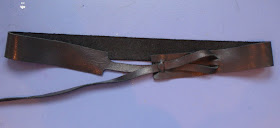The state of consumer culture, for me, is an integral part of why I want to look into the emotional value of objects. So much crap is produced every day, and that crap has packaging... and it's all made of plastic... and then it's shipped all around the world with the power of oil... where we use it for a short period of time, it breaks or it was just crap to begin with so then we buy more...
iPods killing people. We immerse ourselves in social networking sites, apps and our own audio world that we don't see what is around us, who we just passed on the street or what's
coming from behind.
"There is little point designing physically durability into consumer goods if Consumers have no desire to keep them" - Emotionally Durable Design
"...a pathology of material culure that includes aberraions, transgressions and obsessions, the consequences of and motivations for the misuse of objects, and object malfunctions." - Notopia, Design Noir
"Modern products lack character; they are to smart and precise, removing all possible surprise, mystery and perhaps above all, charm from the process of engagement" -Emotionally Durable Design
"Landfills around the world swell with the fully functional appliances - freezers that still freeze and toasters tht still toast - their only crime is being a failure to sustain empathy with their users." Emotionally Durable Design
Mourning JewelleryHeirloom jewellery - the passing on, sentimental attachment to a thing because of its past owners.
Wabi-Sabi:
"Wabi-sabi is exactly about the delicate balance between the pleasure we get from things and the pleasure we get from the freedom of things." (Koren, L.)
Wabi-sabi is a Japanese philosophy of not only what is beautiful but a way of living. It is particularly fascinating when associated with aesthetic as many objects and places labelled as wabi-sabi are not conventionally beautiful or pleasing to the eye. However, given understanding it is through what may be seen as ugliness, or crudeness, the individual and complex beauty shows. Wabi-sabi allows for degradation and attrition, and through involvement in the forms of corrosion and contamination the resulting experience can be richer. As a practice the originated in Japanese tea ceremonies, wabi-sabi was a counter reaction to the glamorous and pristine Chinese teas ceremonies dominant at the time. Rather, wabi-sabi focus on the obscure, hidden and ephemeral things allowing for a transient aesthetic that "beckon: get close, touch, relate." (Koren, L.) These feature relate particularly to the area of design and creation explored in Limited Life, as a focus on involvement and sustaining appreciation.
Artists such as Shinichi Maruyama represent the thought behind wabi-sabi through his photographs and moving images of water. The very nature of water summarises the wabi-sabi aesthetic well due to its transient form. Through stills Maruyama also captures the exposure involvement and instant form degradation.
Pascal Anson
Pascal Anson (1973-) is a British designer who studied at the Wimbledon School of Art and the Royal Collage of Art in London and whose work ranges across product, furniture and environment or spatial design. Of particular interest to this project is his Reunification Project series. This series focuses on lost and lonely objects who were once part of a set but have become separated over time. By tagging objects in groups Anson gives a pile of mismatched cutlery a unifying feature by being treated in the same way, dipped red handles, to enable the item to continue on as was intended. He applies this technique to a range of objects such as chairs, figurines and even a suit that acts as a wearable filofax of contact numbers for when technology does not function. The validating of objects that may have been deemed worthless because they were no longer a complete set is a thoughtful approach to addressing wasteful tendencies and dismissive perspectives.
Olafur Eliasson
Olafur Eliasson (1967-) is a Danish artists whose works incorporate light, sculpture, photography and even moss and water, are a stunning experience. Eliasson's works allow the view to experience a unique perspective because of the angle at which they view the work and the time at which it is viewed. His recent exhibition at Sydney's Museum of Contemporary Art, December 2009 - April 2010, titled Take Your Time allowed viewers to experience the subtleties of light, water, darkness, texture and smell. Eliasson's works truly engage all the senses and created an atmosphere of wonder and discovery.
Naomi Filmer
Naomi Filmer's (1969-) works are highly sculptural are far from being solely viewed on a stationary plinth. The London and Milan jewellery designer's works take ergonomics to a whole new level. The pieces are not only formed with the body in mind but require it to be truly beautiful. Filmer's engaging works also manipulate the wearer into positions and poses that may or may not be natural breaching the line between function and comfort. Hand crafted the pieces, even though they are created from precious metals, glass and found objects, still manage to appear to be extensions of ones body.






















